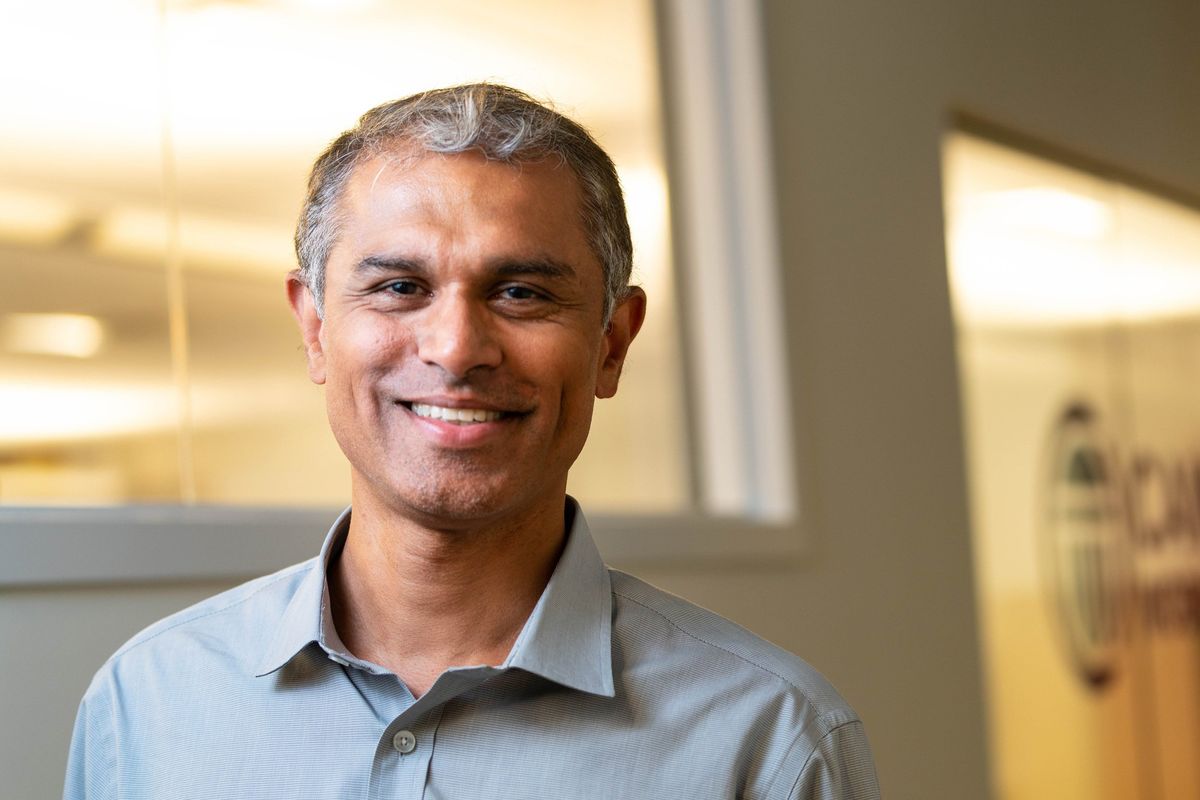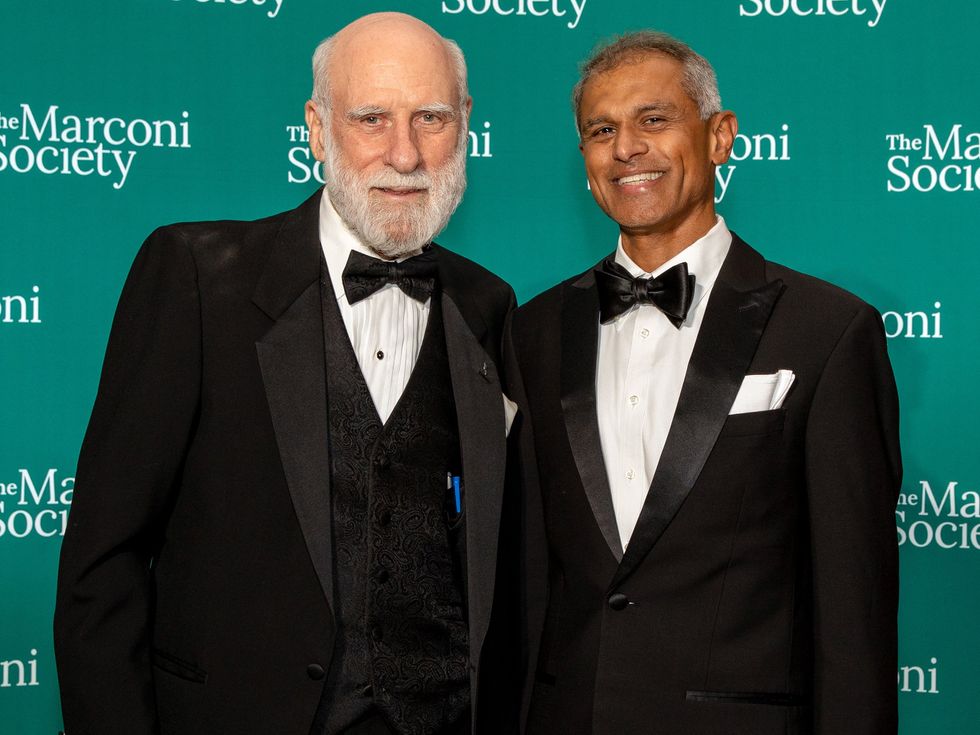MIT Professor’s IoT Sensors Make Roads Safer

Back in 2005, before smartphones were generally available, MIT Professor Hari Balakrishnan was so fed up with commuting delays in Boston that he built a mobile system to monitor road conditions.
Hari BalakrishnanEmployer
MIT
Title
Professor
Member grade
Fellow
Alma maters
Indian Institute of Technology, Madras, and the University of California, Berkeley
He and his research team at MIT's Computer Science and Artificial Intelligence Laboratory developed CarTel, short for car telematics. Using signal processing and machine learning, their sensing device for vehicles was able to infer the presence of potholes and other impediments from changes in traffic flow, which it measured with GPS and an accelerometer. Their research won several awards, and the system was covered by The Boston Globe.
In 2010 Balakrishnan and two cofounders commercialized CarTel by launching Cambridge Mobile Telematics. Today the Massachusetts company is the largest telematics service provider in the world. Insurance companies, car manufacturers, rideshare services, and public agencies use CMT data to assess driver behavior, encourage safer driving, dispatch roadside assistance, and more.
Balakrishnan, an IEEE Fellow, is this year's Marconi Prize winner for his fundamental discoveries in mobile sensing, networking, and distributed systems." The award, given by the Marconi Society, is considered to be the top honor in communications.
On paper this award honors me, but it really is a recognition of my 30-plus Ph.D. students, postdocs, collaborators, and the team at CMT who have worked incredibly hard in creative ways to take research ideas and have them really impact the world," he says. It honors the field of mobile sensing and networked systems."
Hari Balakrishnan talks to the Marconi Society about his career highlights and his thoughts on receiving the prize.Marconi Society
Using data to make driving saferBalakrishnan came up with the idea for CarTel while talking with fellow MIT Professor Samuel Madden, a director of the university's Data Systems and AI Lab and an expert on data management and sensor computing.
I told him we should start a research project that takes sensors that we both know a lot about, attach them to cars, measure what's happening, and then try to understand the data," Balakrishnan recalls. This was before iPhones, Androids, and Google Maps."
They later founded CMT, with Madden serving as its chief scientist.
CarTel was one of the first projects in mobile sensing," Balakrishnan says. We showed that it could work at scale.
I was trying to figure out how to commercialize it using the notion of mobile sensing for social good."
Help came in 2009 from William V. Powers, a seasoned sales executive who became Balakrishnan's business partner. He is also a CMT cofounder and the company's CEO.
Balakrishnan says that although the startup had the technology, it didn't have a business model. After reading articles about how insurance companies were using expensive hardware to measure people's driving to set premium prices and uncover fraudulent claims, they found their model.
Our mission is to make the world's roads and drivers safer."
It clicked in my head that we had shown, in principle, how to do that with consumer phones and inexpensive Internet of Things [IoT] devices that could be put into a car without professional installers," he says.
That early system evolved into DriveWell, an AI-driven platform that gathers data from monitors including accelerometers, gyroscopes, and position sensors in smartphones, dashcams, and IoT devices such as the DriveWell Tag.
The platform combines the information with contextual data to create a picture of how drivers are operating their vehicles, measuring factors such as hard braking, excessive speeding, and phone distraction, Balakrishnan says.
Our mission is to make the world's roads and drivers safer," he says.
DriveWell has provided services to more than 30 million vehicles to date. Insurance companies including Admiral, Discovery, HUK-Coburg, MS&AD, and USAA use CMT's programs to offer discounts to better drivers. CMT recently partnered with Hyundai to offer its customers real-time roadside assistance and repair services. There are also DriveWell, FuelStar, and Openroad mobile apps for motorists who want feedback about their driving.
The first indoor location systemBalakrishnan has created other systems that use sensors for practical purposes. Between 1999 and 2004, he oversaw the development of the Cricket indoor location system. It combined radio frequency and ultrasound technologies. Beacons mounted on walls and ceilings publish information on an RF channel, which sends out a chirping signal. The beacon then sounds out a corresponding ultrasonic pulse. Receivers attached to mobile devices listen for the RF signals and the ultrasonic pulse. Cricket uses the different speeds of sound and of RF to calculate the distance between the receiver and the beacon.
The system provided space identifiers, position coordinates, and orientation. Cricket provided distance ranging and positioning precision of between 3 and 5 centimeters. It was used in areas where GPS didn't work well, such as hospitals, office buildings, and research centers.
GPS only works outdoors," Balakrishnan says. Even today, you can't get GPS signals inside. When your apps show you the location inside, it's using other technologies."
The research team open-sourced the hardware and software, and more than 1 million units were built and deployed.
This approach didn't scale to every device in the world," Balakrishnan says, because adding ultrasonic hardware to every device is not practical. However, with modern smartphones capable of sending and receiving ultrasonic signals on their speakers and microphones, the approach developed in Cricket might become useful in the future. Indeed, some recent proposals for contact tracing for COVID-19 have used this approach."
 This year's IEEE Medal of Honor recipient Vint Cerf congratulates Marconi Prize winner Hari Balakrishnan at the Marconi Awards Gala, held on 27 October in Washington, D.C.Marconi Society
This year's IEEE Medal of Honor recipient Vint Cerf congratulates Marconi Prize winner Hari Balakrishnan at the Marconi Awards Gala, held on 27 October in Washington, D.C.Marconi Society
Balakrishnan earned a bachelor's degree in computer science in 1993 from the Indian Institute of Technology, Madras. He picked the field, he says, because he thought it would let him make practical use of mathematics.
I knew nothing about computer science," he says. I had never programmed a computer before. But I knew I was interested in things that were mathematical in nature, and I enjoyed both math and physics greatly. After about a year and a half, I felt like I understood what the field was about. By the time I finished my undergraduate degree, I absolutely loved it."
While pursuing a Ph.D. in computer science at the University of California, Berkeley, he became passionate about conducting research, he says. He enjoyed it so much, he says, that he wanted to make a career of it.
He's also known for his early research on how to improve wireless networks-which can be found in the IEEE Xplore Digital Library and which won the 1998 Association for Computing Machinery's Doctoral Dissertation Award.
In the final year of his Ph.D., in 1998, he decided to pursue an academic career. He interviewed for a faculty position at MIT and knew immediately it was where he wanted to work, he says. The university hired him that year, and he has worked there ever since.
I felt like this was the place where people were on the same wavelength as me," he says. It's always good to go to a place where people appreciate what you do."
Despite his entrepreneurial success, Balakrishnan continues to teach.
I just really enjoy working with students and just love research," he says. I enjoy teaching students and, frankly, they teach me as much as I teach them."
The IEEE communityBalakrishnan says he intially joined IEEE as a student to get the discounted rate for membership and conference registrations. But after he began working, he realized that it's important to be part of a professional community that has like-minded people who care about the fields that I care about," he says. IEEE has benefited my career because I've been at conferences and events where I've made professional connections that will last a lifetime."
He is also a member of the U.S. National Academy of Engineering and the American Academy of Arts and Sciences.
IEEE recognized him in 2021 with its Koji Kobayashi Computers and Communications Award for broad contributions to computer networking and mobile and wireless systems."